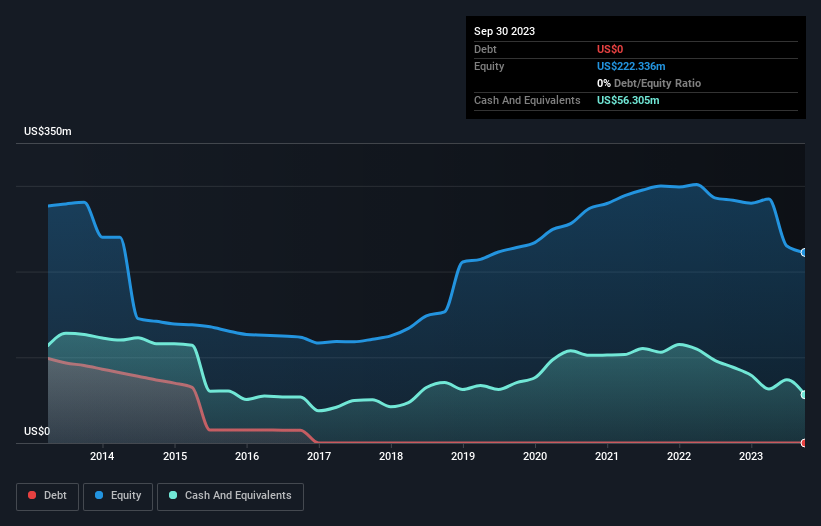QuinStreet (NASDAQ:QNST) Is In A Strong Position To Grow Its Business
We can readily understand why investors are attracted to unprofitable companies. For example, although Amazon.com made losses for many years after listing, if you had bought and held the shares since 1999, you would have made a fortune. Nonetheless, only a fool would ignore the risk that a loss making company burns through its cash too quickly.
So should QuinStreet (NASDAQ:QNST) shareholders be worried about its cash burn? For the purposes of this article, cash burn is the annual rate at which an unprofitable company spends cash to fund its growth; its negative free cash flow. We'll start by comparing its cash burn with its cash reserves in order to calculate its cash runway.
Check out our latest analysis for QuinStreet
How Long Is QuinStreet's Cash Runway?
A company's cash runway is the amount of time it would take to burn through its cash reserves at its current cash burn rate. When QuinStreet last reported its balance sheet in September 2023, it had zero debt and cash worth US$56m. In the last year, its cash burn was US$16m. So it had a cash runway of about 3.5 years from September 2023. Importantly, though, analysts think that QuinStreet will reach cashflow breakeven before then. In that case, it may never reach the end of its cash runway. The image below shows how its cash balance has been changing over the last few years.
Is QuinStreet's Revenue Growing?
We're hesitant to extrapolate on the recent trend to assess its cash burn, because QuinStreet actually had positive free cash flow last year, so operating revenue growth is probably our best bet to measure, right now. As it happens, operating revenue has been pretty flat over the last year. Clearly, however, the crucial factor is whether the company will grow its business going forward. For that reason, it makes a lot of sense to take a look at our analyst forecasts for the company.
How Easily Can QuinStreet Raise Cash?
Since its revenue growth is moving in the wrong direction, QuinStreet shareholders may wish to think ahead to when the company may need to raise more cash. Companies can raise capital through either debt or equity. Commonly, a business will sell new shares in itself to raise cash and drive growth. By looking at a company's cash burn relative to its market capitalisation, we gain insight on how much shareholders would be diluted if the company needed to raise enough cash to cover another year's cash burn.
QuinStreet's cash burn of US$16m is about 2.4% of its US$663m market capitalisation. That means it could easily issue a few shares to fund more growth, and might well be in a position to borrow cheaply.
Is QuinStreet's Cash Burn A Worry?
As you can probably tell by now, we're not too worried about QuinStreet's cash burn. In particular, we think its cash runway stands out as evidence that the company is well on top of its spending. Although its falling revenue does give us reason for pause, the other metrics we discussed in this article form a positive picture overall. There's no doubt that shareholders can take a lot of heart from the fact that analysts are forecasting it will reach breakeven before too long. Taking all the factors in this report into account, we're not at all worried about its cash burn, as the business appears well capitalized to spend as needs be. Its important for readers to be cognizant of the risks that can affect the company's operations, and we've picked out 1 warning sign for QuinStreet that investors should know when investing in the stock.
Of course, you might find a fantastic investment by looking elsewhere. So take a peek at this free list of interesting companies, and this list of stocks growth stocks (according to analyst forecasts)
Have feedback on this article? Concerned about the content? Get in touch with us directly. Alternatively, email editorial-team (at) simplywallst.com.
This article by Simply Wall St is general in nature. We provide commentary based on historical data and analyst forecasts only using an unbiased methodology and our articles are not intended to be financial advice. It does not constitute a recommendation to buy or sell any stock, and does not take account of your objectives, or your financial situation. We aim to bring you long-term focused analysis driven by fundamental data. Note that our analysis may not factor in the latest price-sensitive company announcements or qualitative material. Simply Wall St has no position in any stocks mentioned.

